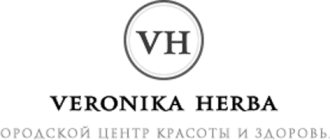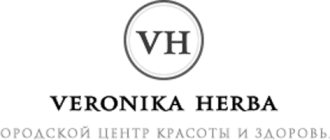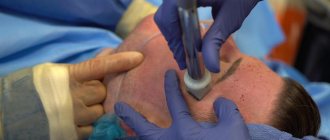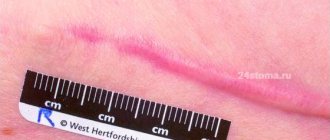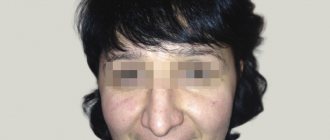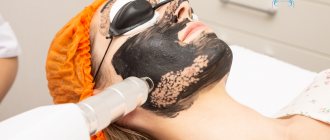From this article you will learn:
- the best threads in cosmetology – rating, reviews,
- what is face and neck reinforcement,
- face lift with threads – price for 2022.
In cosmetology, there are 3 main types of threads that are used to correct age-related changes in the soft tissues of the face and neck - these are mesothreads, reinforcing and lifting threads. The same threads can be used not only on the face, but also to correct age-related changes in the skin on the body (for example, to tighten sagging abdominal skin, breast lifting). At the same time, most patients have only heard about the so-called mesothreads, although in comparison with other types of threads, they give the weakest effect.
Mesothreads (synonym - biostimulating threads) do not achieve a lifting effect, and are intended only to improve the appearance and slightly increase the density of the skin. Those. This type of thread will not allow you to reduce the depth of wrinkles, tighten the oval of the face or get rid of jowls or a double chin. Only so-called “lifting threads”, which are capable of moving soft tissues and holding them in a new position, can radically cope with these problems. This type of threads was developed in 1998 by the domestic surgeon M.A. Sulamanidze, and now they are used all over the world.
Examples of different types of threads -
Well, the last type of thread, which in its effect occupies an intermediate position between meso- and lifting threads, is the so-called “reinforcing threads”. The classic technique of installing these threads can reduce the appearance of wrinkles and folds, as well as significantly improve the firmness and appearance of the skin due to the production of collagen. But with a more complex installation (the “loop” technique), this type of thread also acquires moderate lifting properties. This will allow, for example, with a mild degree of gravitational ptosis, to slightly tighten the tissues to the zygomatic-parotid region (including increasing the volume of the cheekbones and cheeks).
In this article we will primarily talk about the use of reinforcing threads for the face, because... Reinforcing the face with threads is a borderline type of thread lifting that most cosmetologists can perform. Installing reinforcing threads is much more difficult than installing mesothreads, and that is why most cosmetologists work only with mesothreads, which do not require complex manual skills. As for the installation of lifting threads, this is the most difficult thing in thread implantology and, in our opinion, they should only be installed by cosmetologists with a surgical background (for example, with experience in maxillofacial, thoracic or plastic surgery).
Content:
- What imperfections does thread lifting combat?
- Pros and cons of thread lifting
- Indications for the procedure
- Contraindications
- Do I need to prepare for a thread lift?
- How to do a thread face lift (with video)
- Photos of patients before and after thread lifting
- Rehabilitation after the procedure
- Possible complications and side effects
Any woman, even with the modern rhythm of life, wants to remain young and attractive as long as possible. At the same time, spend a minimum of time on self-care. Therefore, many choose modern non-surgical cosmetology techniques with the shortest rehabilitation period. For example, thread lifting of the body and face, which allows you to achieve noticeable results in just one session.
Thread lifting is minimally invasive, the procedure takes no more than an hour and requires only local anesthesia. In this case, you can correct a lot of defects:
- remove sagging soft tissues;
- eliminate wrinkles on the face and body;
- lift the upper eyelid;
- tighten eyebrows from the outer edge;
- tighten the lower and middle third of the face, neck;
- strengthen and correct the oval of the face;
- outline cheekbones;
- tighten the inner thighs, arms, as well as the chest and anterior abdominal wall.
Many threads have a delayed effect, and the result, which is noticeable immediately, continues to grow over the course of 6 months.
Scheme of the thread reinforcement procedure –
If you want to perform the thread reinforcement procedure to prevent age-related changes, then the preparatory stage can be sacrificed. However, if threads are installed to correct changes that have already occurred, patients are usually recommended to undergo a preparatory course, which will not only improve the condition of the skin in itself, but will also increase the effectiveness and duration of the thread reinforcement procedure.
1) Preparatory stage –
If you want to increase the effectiveness of face/neck reinforcement, it is important to prepare the skin for thread implantation. We are talking about injection techniques - this can be a course of mesotherapy or a course of biorevitalization. Depending on the initial condition of the skin, at least 4 mesotherapy sessions may be required (the full course is 10-12 procedures) - with intervals of 7 days between procedures. If we are talking about a more expensive biorevitalization technique, then 3-4 procedures are usually sufficient - with intervals of 14 days between procedures.
The difference between these methods lies in the composition of the drugs used. Biorevitalization procedures use more concentrated and stronger components (compared to mesotherapy preparations). You can learn more about these methods and learn about the differences between the drugs in the reviews using the links below.
→ Mesotherapy regimens → Preparations and biorevitalization regimens
As for the preparation immediately before installing the threads, if there are no contraindications, 2-3 days before the procedure, a drug to increase blood clotting is prescribed (usually Dicinon, 1 tablet 2 times a day). This will reduce the risk of developing hematomas and bleeding. In addition, it is advisable to prescribe an antiviral drug for herpes, such as Acyclovir or Valaciclovir, 2 days in advance. On the day of the procedure, you should not apply any decorative cosmetics to your face.
2) Procedure for installing threads -
The duration of the thread reinforcement procedure will average about 1 hour. Installation of reinforcing threads should be carried out only in a treatment room, with careful adherence to asepsis and antisepsis. There must be a sterile table, the doctor and the patient must be dressed in sterile gowns, and only sterile gloves must be used. The “surgical field” must be carefully processed (as is done during surgical operations).
Anesthesia is very important, especially if the threads will be installed through the nasolabial fold and the ends of the threads will be fixed in the tissues of the upper lip (this area is the most painful). If the threads are installed only in the cheek-zygomatic area and the patient does not have a very high pain threshold, sometimes it is enough to inject an anesthetic directly at the point of skin puncture. If the ends of the threads are fixed in the perioral zone, then cannula anesthesia is necessary.
Cannula anesthesia means that a long cannula (fixed to a syringe with an anesthetic solution) is inserted through a puncture point in the skin. But ordinary dermato-cosmetologists rarely perform anesthesia with a cannula, because... it is more expensive, preferring to prick with a regular needle as the threads are installed. We will omit how anesthesia is technically carried out, and how the anesthetic solution is prepared. The choice of anesthetic in patients at risk is important - patients with diabetes mellitus, bronchial asthma, vascular pathology, and an allergic history.
How to install reinforcing threads for the face: video
Technique for installing threads on the face –
Next we move directly to installing the threads. For this purpose, long cannulas with a blunt end are used. The thread is located inside the cannula, and only its tip protrudes slightly from its spout (Fig. 11). The cannula moves into the tissues, subdermally, i.e. approximately at a depth of 2 to 4 mm. The depth of advancement of the cannula in the tissues should not be too great - otherwise there will be no biostimulating effect on the dermis. It is also impossible to be too superficial, because... otherwise the thread may contour through the skin.
Moreover, in different parts of the face, the depth of the cannula should be different, because this can allow us to either increase the volume of tissue in the cheekbone area, or, conversely, press voluminous fat packets to the bone, making them less noticeable. The depth of advancement of the cannula should also be different for natural folds, for example, where there is more tissue in the area of the fold, the cannula is passed more superficially, where there is retraction of the tissue, deeper. This technique will reduce the severity of the fold.
The tip of the cannulas is not punctured at the end points. Let us remember that the free tip of the thread dangles at the tip of the cannula, and therefore, when the blunt end of the cannula reaches the end point, we simply press our finger on the skin in the area of the tip of the cannula, after which we begin to slowly remove it. Due to the fact that there are notches at the tip of the thread, the cannula comes out, but the thread remains in place. The effect of reinforcement and its duration will be strictly proportional to the number of threads installed.
For the entire cheek-zygomatic area with correction of the nasolabial and labio-mental folds, 9-10 pieces of thread are usually required (on each side of the face). The optimal distance between threads depends on the zone and ranges from 0.5 to 2.5 cm. The installation scheme for reinforcing threads for correcting only labio-mental folds is 3-4 threads on each side of the face. It is basically impossible to correct the corners of the mouth with reinforcing threads, because... this is only possible when using Spring Thread elastic threads.
It is also possible to install reinforcing threads to raise the outer edges of the eyebrows. But the effectiveness of such a technique leaves much to be desired (you can only count on a small degree of correction), with a relatively high price tag.
Correction of hands and abdomen –
Reinforcing threads show high efficiency when correcting hands, especially if threads with a high content of polylactic acid are used. The latter can not only improve the condition of the skin, but also significantly reduce the severity of wrinkles and increase the thickness of the dermal layer of the skin. There are several techniques for arm reinforcement, with threads passing above or below the superficial veins. The first option is preferable, because in this case, the veins are not compressed by the threads.
Abdominal correction with reinforcing threads is an alternative to surgical abdominoplasty. A typical patient portrait for abdominal reinforcement is a woman 28-45 years old, thin, has given birth, with a small thickness of subcutaneous fat, who likes to walk with an open stomach in the summer. In this case, the patient has signs of ptosis (drooping) of the skin and changes in the oval of the navel from vertical to horizontal. Installing reinforcing threads in this case will give a lifting effect and make the navel area more attractive. The effect will last about 6-8 months.
Reinforcement of the mammary glands and buttocks –
With the help of reinforcing threads, you can solve the problem of moderate ptosis, asymmetry or an aesthetically unattractive shape of the female breast. In this case, reinforcing threads act as an alternative to surgical breast lift. Their installation is carried out without cuts. The pronounced effect usually lasts about 8 months, but a small effect will still persist for life - due to the formation of connective tissue strands along the threads (they will serve as stiffening ribs for the tissue).
In turn, a breast lift with lifting threads gives results for 3 years, but their installation is more traumatic, because the threads on one side will have a rigid fixation to the collarbones. In addition to the not very long-lasting effect, another disadvantage of thread breast reinforcement is the high consumption of threads (accordingly, the issue price will be high). Another indication for reinforcement is ptosis of soft tissues and sagging skin of the buttocks. The average duration of the effect of reinforcing threads for these indications will be about 2 years, the maximum – about 5 years.
Types of threads
| Material | Description | Examples |
| Polylactic acid | Fully biocompatible, hypoallergenic. Over time, they dissolve, and in their place there remains its own collagen framework that supports the skin. Such threads stimulate the production of elastin and collagen and moisturize the skin. The result lasts for about 2 years. | Aptos Visage, Promoitalia Free Flotation |
| Polypropylene | Very durable, can withstand loads of up to 6 kg, are hypoallergenic, do not dissolve and provide a lifting effect for up to 7 years. | Aptos, Silhouette Lift |
Recommendations after the procedure –
- Avoid active physical exercise for 1-2 weeks
- refrain as much as possible from sudden facial and chewing movements after the procedure (for 12–24 hours).
- for 2-4 weeks you need to refrain from visiting the solarium, bathhouse, sauna, swimming pool, beach, and you should not take too hot a shower or hot bath,
- it is advisable not to use creams that resolve hematomas (since sclerosis of the resulting hematomas increases the elasticity of the skin in the places of their formation),
- Rarely, after installation of reinforcing threads, it may be necessary to wear a compression mask.
Photos of our patients before and after thread lifting
Contraindications –
The main contraindications to the facelift procedure with threads:
- pregnancy and lactation,
- acute infectious and chronic diseases in the acute stage,
- autoimmune diseases,
- systemic blood diseases,
- tendency to form keloid and hypertrophic scars,
- taking blood thinning medications (aspirin, anticoagulants); taking such medications should be discontinued 3-10 days before the procedure, be sure to obtain permission to do so from the doctor who prescribed them. We hope that our article was useful to you!
Sources :
1. Additional. prof. author's education on thread lifting (
,
), 2. Personal experience of clinical application, 3. National Library of Medicine (USA), 4. American Society of Plastic Surgeons (USA), 5. “Thread implantology” (Kodyakov A.A., Fedorov P.G., Aleksandrov V.N.).
How to shorten the rehabilitation period
Recovery time after threads varies individually. If you follow the cosmetologist’s instructions, the active rehabilitation period will last several days.
The cosmetologist will tell you what to do after installing the threads, taking into account the characteristics of the skin. General recommendations:
- Wipe puncture sites with antiseptics three to five times a day. Typically, punctures are made along the hairline, in the neck fold, under the chin, near the ears. Chlorhexidine and Miramistin are suitable disinfectants.
- If necessary, the doctor may recommend cooling the area of the procedure to quickly reduce swelling and quickly resolve bruises.
- Wash with cool water without rubbing the skin. There is no need to use cosmetics.
- Sleep on your back to prevent threads from shifting and causing excess friction against the pillow.
- For the first day, eat soft food that does not require prolonged chewing. It is better to drink liquid through a straw.
- Use sunscreen every time you go outside.
- Protect your face from wind and frost.
Advantages of our center
- When you come to us, you can count on a high level of cosmetic services and maximum efficiency and safety of all procedures .
- The Center's specialists have undergone multi-stage training in working with biothreads and have all the necessary diplomas and certificates.
- The materials used in the work have been repeatedly tested and tested , purchased from reliable suppliers and stored in the right conditions .
- The problem of each patient in our center is treated with maximum concern - we do not prescribe unnecessary procedures and always give recommendations that will help solve your particular problem, without unnecessary procedures and “universal” solutions.
- At the GMTClinic medical center you will find high service and fair prices .
Reinforcing and pseudo-lifting mesothreads.
So, their main differences from true lifting threads are as follows:
Threads consisting of polydiaxonone (PDO)
- Polydioxanone is a hypoallergenic, non-toxic, pyrogen-free surgical suture material that causes a very weak tissue reaction during resorption.
- The high rate of biodegradation of mesothreads ensures mild neocollagenosis without compromising microcirculation and tissue vascularization in the installation area. After 180-240 days after the procedure, mesothreads completely biodegrade, breaking down into carbon dioxide and water familiar to the body (100% biocompatibility with tissues). In the area where the mesothread is installed, a slight compaction of connective tissue remains, which continues to perform a “frame” function for 12-18 months.
Due to such a mild and short-lasting effect, we cannot obtain a true lifting effect.
Effects when installing mesothreads:
- biostimulation (biorevitalization);
- reinforcement (remodeling);
- vector lifting.
What material is used
For safe skin tightening that does not involve any incisions, cosmetology uses special surgical threads, which the specialist selects individually for each client, guided by the area of application, skin characteristics and the desired result. They are made from biocompatible hypoallergenic materials that, when introduced into the dermis, can form scar tissue - an internal fixation adhesion between the skin and muscles, stimulate the production of collagen types 1 and 3, and rejuvenate the skin at the cellular level, i.e. from the inside. They are inserted with the thinnest needles or cannulas.
There are two types of threads:
- biodegradable - resorbable. They are produced from a copolymer of L-lactide and e-caprolactone. This material is friendly to the human body and is an activator of collagen production, restoring youthful skin at the cellular level. The threads remain in the tissues for more than a year, and then, when they dissolve, they are excreted naturally. But the rejuvenating mechanism she launched continues to work;
- non-absorbable. Made from synthetic material polypropylene, used in surgery for almost half a century. Such threads have been tested for a long time, are safe, are not rejected by the body and help to obtain a long-lasting effect.
VIRTUSCLINIC specialists choose Aptos thread lifting technology and the material produced. The technique was created in 1996 by plastic surgeon M.A. Sulamanidze - the inventor of threads for tightening soft tissues. Its name is composed of the Latin “a” - “negation” and ptos - “omission”.
Absorbable for more than 360 days, Aptos threads have a unique composition and excellent rejuvenating properties. They are introduced through pinpoint punctures and reliably fix soft tissues in the required position thanks to special retaining notches until a reliable framework of its own collagen is formed in the skin. In assortment:
- Aptos Light Lift Thread 2G and Light Lift Needle 2G (classic and Soft, Blunt modifications) – threads are inserted with two double-edged needles through one puncture and distributed along the required contour in different directions. The tissues are tightened and the arch of the eyebrow gets the desired shape;
- Aptos Visage in Excellence Soft or Nano variants. Tightens, restores, reinforces tissues, moisturizes the skin of people of different ages;
- Aptos Nano Spring is an ideal delicate option for those with thin, delicate skin in the eyebrow area.
The cosmetology clinic offers you the following procedures:
- drug Laennec for rejuvenation;
- removal of blood vessels on the face;
- drug melsmon for rejuvenation;
- facial photorejuvenation;
- etc.

